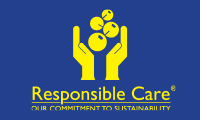While there are benefits in working from home, an international study has also found less-positive aspects and outlines how we must adapt to continue working effectively

The first international empirical study of work from home shows there are benefits that could be maintained after the Covid-19 pandemic.
But the new research also outlines less-positive aspects, such as the lack of boundaries between work and home, and the loss of spontaneous, creative discussions or problem-solving.
Researchers at the universities of East Anglia (UEA) and Greenwich in the UK, and Auckland University of Technology (AUT) and Phone Free Day in New Zealand, collaborated on the study. Their article, ‘An Affordance Perspective of Team Collaboration and Enforced Working from Home During (EWFH) COVID-19’, is published today in the European Journal of Information Systems.
In April, researchers interviewed 29 knowledge workers from New Zealand, Australia, UK, USA, Sweden, Austria, Germany, Denmark and Switzerland, to ask about the role of technology in working from home.
The study finds that people working remotely use team collaboration technologies to enhance their delivery of outputs, and to maintain or even foster relationships with their colleagues. In so doing, they established a new norm for the culture and execution of team collaboration.
Overall, the new way of working has a near-equal mix of positive and negative implications for team collaboration, particularly in terms of knowledge-sharing, virtual meetings and networking.
Knowledge sharing
Without easy access to a shared physical space, EWFH employees note they have had to have scheduled, rather than spontaneous, interactions with colleagues.
While this approach has led to a decrease in the number of interruptions, it also impacts the kind of knowledge-sharing that comes through ad-hoc or unplanned discussions among workmates. Junior employees, in particular, feel hamstrung by the inability to easily gauge if a colleague is busy or available to provide advice or input.
Similarly, while screensharing of documents has become common practice, it does not replace the value of in-person discussions.
Virtual meetings
EWFH participants agree that regularly scheduled virtual team meetings help mitigate feelings of isolation and maintained a sense of collegiality.
However, the lack of boundaries between work and home prove challenging for some, particularly those with family commitments. They report that frequent meetings can feel burdensome as they try to simultaneously manage work duties with children and other carer responsibilities.
Networking
Particularly for those respondents who usually work offsite, EWFH creates a welcome sense of inclusivity and collegiality. This is largely because teams use the same technology channels to communicate during their EWFH. This shared approach helps “flatten” traditional perceptions of hierarchy among employees and also enables workers to meet colleagues they would not previously have connected with.
However, virtual networking events are also marked by a sense of “rigidity” because technological limitations mean that only one person at a time can speak.
Lead author, AUT’s Dr Lena Waizenegger, says the research team are surprised at how quickly employees and organisations pivoted to new technologies and approaches to work.
“We were amazed by the innovation capabilities and creativity of teams and businesses. EWFH showed that remote or flexible working is not only feasible, it also has various positive effects that should be maintained even after the pandemic,” Waizenegger says.
Dr Brad McKenna, an associate professor in UEA’s Norwich Business School, says EWFH created new possibilities for hybrid approaches to work.
“Employers were forced to simultaneously test and embrace a high-trust culture. On the whole, employees proved that they can be trusted in this kind of environment, so that will influence how we work now and in the future,” McKenna says.
Dr Wenjie Cai, a senior lecturer at the University of Greenwich, says the speed and ubiquity of lockdown helped create a strong virtual community.
“Organisations did not have time to provide proper training to their staff, and many knowledge workers did not have the chance to fully prepare for remote e-working. People genuinely supported each other from a distance,” Cai says.
An Affordance Perspective of Team Collaboration and Enforced Working from Home During COVID-19, is published on August 12, 2020 in the European Journal of Information Systems.




